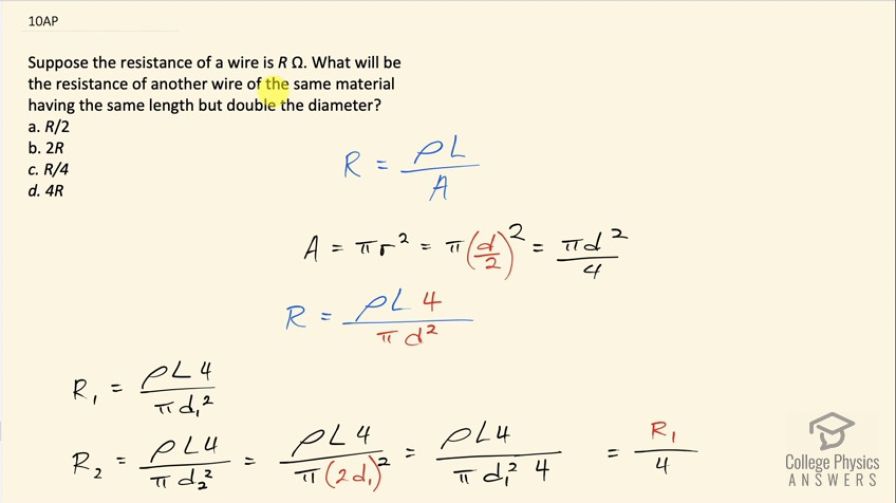Question
Suppose the resistance of a wire is R Ω. What will be the resistance of another wire of the same material having the same length but double the diameter?
- R/2
- 2R
- R/4
- 4R
Final Answer
(c)
Solution video
OpenStax College Physics for AP® Courses, Chapter 20, Problem 10 (Test Prep for AP® Courses)

vote with a rating of
votes with an average rating of
.
Video Transcript
This is College Physics Answers with Shaun Dychko. Consider a wire with a resistance of 4 ohms, what will be the resistance of a different wire that has the same material and length but double the diameter? So we need an expression for resistance in terms of length and material and diameter and this is going to do it for us we have resistivity multiplied by length divided by cross-sectional area and the cross-sectional area can be expressed in terms of diameter by writing it first as π times radius squared and then replace r with diameter divided by 2 and this makes the area then π times diameter squared over 4 and we can substitute that in place of A and we do that here and I am multiplying by the reciprocal of this area instead of dividing a fraction by a fraction, which I find kind of messy, so I am multiplying by this flipped over. So we have resistivity times length times 4 divided by π times diameter squared is our formula for resistance. So the resistance of the first wire will be ρL4 over πd 1 squared— diameter one in other words— and R 2 will be the same factors but it will have diameter two here instead and the diameter two can be replaced with 2 times diameter one since we are told that the second wire is double the diameter and this is ρL4 over πd 1 squared times 4 because 4 is 2 squared and this whole thing can be replaced with R 1 and so R 2 then is R 1 divided by 4 so the answer is (c).